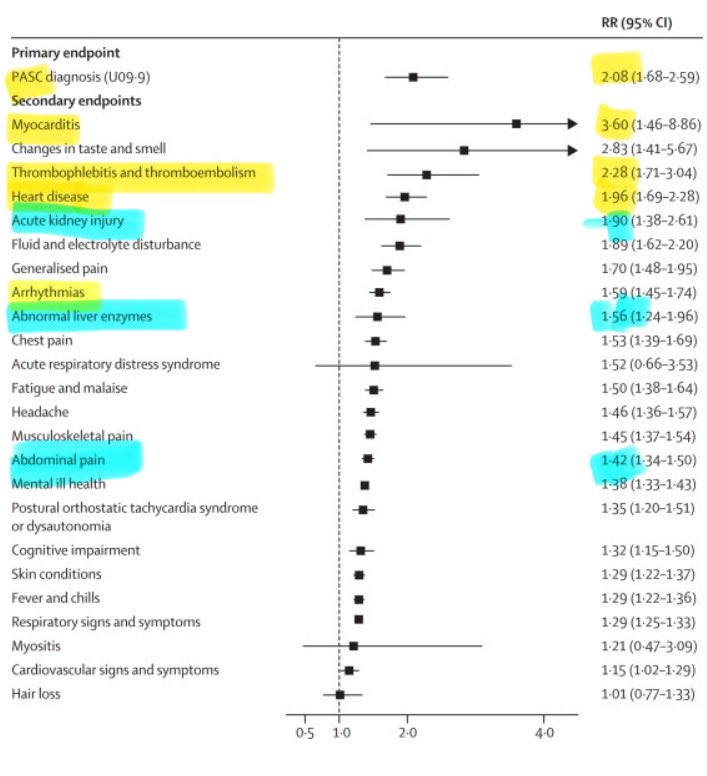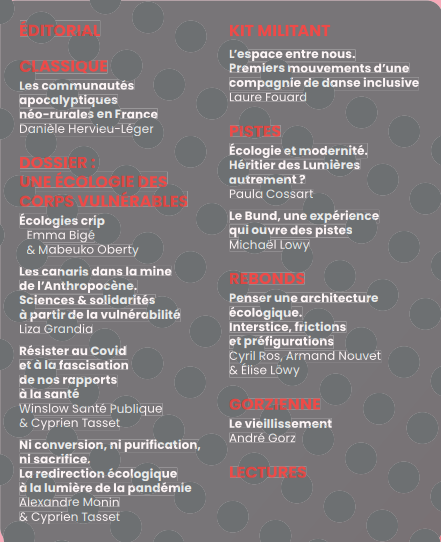Exploration of viral persistence : for long covid of course, but maybe not only
👉 As a team from the Institut Pasteur has published a study showing the persistence of SARS-Cov-2 in the lungs, we contacted them to discuss the matter during a webinar held on the 19th january
1/18
👉 As a team from the Institut Pasteur has published a study showing the persistence of SARS-Cov-2 in the lungs, we contacted them to discuss the matter during a webinar held on the 19th january
1/18

Viral persistence must be taken into account when considering treatment options AND assessing the danger of covid infections (outside immediate death, on the LT)
Thread summarizing Michaela Müller-Trutwin's presentation
2/18
Thread summarizing Michaela Müller-Trutwin's presentation
2/18
The researchers are interested in a component of innate immunity, the natural killer cells (NK cells), which react as early as 1 min. after infection.
It seemed that they were - studied in the case of SARS-Cov-2, even though they play an important role.
3/18
It seemed that they were - studied in the case of SARS-Cov-2, even though they play an important role.
3/18
👉They eliminate infected cells, inhibit viral replication, and modulate adaptive immune responses. NK cell activity varies from one individual to another, depending on age, lifestyle and so on. Depending on past infections and vaccinations,
4/18
4/18
NK cell activity is modified. They develop a memory, and there may be better protection on re-exposure.
Do the NK cells of an individual infected with SARS-Cov-2 develop memory? Can it help to have a better response ❓
5/18
Do the NK cells of an individual infected with SARS-Cov-2 develop memory? Can it help to have a better response ❓
5/18
The study model is the animal (macaque cynomologus).
Use of uninfected control animals, animals infected with the Wuhan strain, and animals infected with Omicron. 6-month convalescence period.
No symptom analysis in this study.
6/18
Use of uninfected control animals, animals infected with the Wuhan strain, and animals infected with Omicron. 6-month convalescence period.
No symptom analysis in this study.
6/18
After 3 weeks post-infection, the PCR remains <0 at different stages in time.
Then we look at the immune response. First, through the inflammatory environment. At 6-18 months post infec°, markers of inflamma° + elevated (IL-6,...).
👉 Why?
7/18
Then we look at the immune response. First, through the inflammatory environment. At 6-18 months post infec°, markers of inflamma° + elevated (IL-6,...).
👉 Why?
7/18
First, PCR on macrophage cells isolated from monkey lungs (6-18 months).
A lot of virus remains in the bronchoalveolar lavage. Classification of animals into three groups, depending on whether or not viruses are detected, and in what quantities.
8/18
A lot of virus remains in the bronchoalveolar lavage. Classification of animals into three groups, depending on whether or not viruses are detected, and in what quantities.
8/18
Can the virus multiply?
Macrophage cells are cultured in the lab. After 2 hours in culture, we see an increase in the amount of virus.
👉Viral replication and reactivation occur in alveolar macrophages in vitro.
9/18
Macrophage cells are cultured in the lab. After 2 hours in culture, we see an increase in the amount of virus.
👉Viral replication and reactivation occur in alveolar macrophages in vitro.
9/18

Macrophages develop a different morphology.
The viruses are not found in the media, which means that they do not leave the cells and remain inside the macrophages.
10/18
The viruses are not found in the media, which means that they do not leave the cells and remain inside the macrophages.
10/18

It forms "tunnels" between cells (protrusions).
The virus is transmitted to macrophages via these protrusions. It travels through the tunnels from cell to cell, evading immune responses.
11/18
The virus is transmitted to macrophages via these protrusions. It travels through the tunnels from cell to cell, evading immune responses.
11/18
Note
-There is a similar mechanism in neurons (another Pasteur study: SARS-Cov-2 hijacks the nanotubes connecting neurons in order to infect them, using bridges to penetrate neurons that lack the ACE2 receptor).
doi/10.1126/sciadv.abo0171
12/18
-There is a similar mechanism in neurons (another Pasteur study: SARS-Cov-2 hijacks the nanotubes connecting neurons in order to infect them, using bridges to penetrate neurons that lack the ACE2 receptor).
doi/10.1126/sciadv.abo0171
12/18
Why is the virus at different levels in different individuals?
The cytokine IFN-y strongly inhibits SARS-Cov-2 multiplication in these alveolar macrophages. The Spike protein induces cytokine production (IFN-y) by NK cells.
13/18
The cytokine IFN-y strongly inhibits SARS-Cov-2 multiplication in these alveolar macrophages. The Spike protein induces cytokine production (IFN-y) by NK cells.
13/18
Less IFN-γ production by NK cells of animals with + large amounts of persistent virus
So spike induces IFN-γ production, and MHC-E expression on macrophages🡪 inhibition of NK cell lytic activity
14/18
So spike induces IFN-γ production, and MHC-E expression on macrophages🡪 inhibition of NK cell lytic activity
14/18
And, in animals with the lowest quantities of persistent viruses :
No inhibition via MHC-E of NK🡪 cells ADAPTATION
15/18
No inhibition via MHC-E of NK🡪 cells ADAPTATION
15/18
Animals with persistent virus have a low capacity to eliminate macrophages.
This tendency is less important in blood NK cells.
SARS-Cov-2 can infect lung macrophages. But in some animals, NK cells adapt and eliminate them.
16/18
This tendency is less important in blood NK cells.
SARS-Cov-2 can infect lung macrophages. But in some animals, NK cells adapt and eliminate them.
16/18
🚨Conclusions of the presentation part:
-> SARS Cov-2 can persist in the lungs up to 1.5 years after infection, e.g. +
-> The degree of viral persistence depends on the individual.
->NK cells play a crucial role in viral persistence
17/18
-> SARS Cov-2 can persist in the lungs up to 1.5 years after infection, e.g. +
-> The degree of viral persistence depends on the individual.
->NK cells play a crucial role in viral persistence
17/18
-> Lung macrophages are an important reservoir of SARS-CoV-2, perhaps the most important.
Further studies are needed, research must be supported
Coming soon: "clips" of important moments (Questions/Answers) from the webinar!
Thank you
18/18
Further studies are needed, research must be supported
Coming soon: "clips" of important moments (Questions/Answers) from the webinar!
Thank you
18/18
here is the link to the entire webinar to see the Questions/ answer part too👇
To the question "in your opinion, is viral persistence due more to the specificities of the virus, or to the host"?
The researchers' answer (activate english subtitles)👇
The researchers' answer (activate english subtitles)👇
Isn't the term "post-viral" misleading when talking about Long Covid ?
Answer from the researchers (activate english subtitles👇
Answer from the researchers (activate english subtitles👇
Question : "What are similarities/differences between HIV and SARS-Cov-2 in terms of viral persistence?"
Answer from the researchers (activate english subtitles)👇
Answer from the researchers (activate english subtitles)👇
Question about ✨treatment options✨that research could open up. Antivirals? immunoptherapy? 💊💊
Researchers' answer (activate EN subtitles)👇
Researchers' answer (activate EN subtitles)👇
• • •
Missing some Tweet in this thread? You can try to
force a refresh












